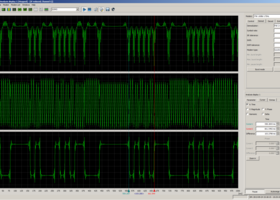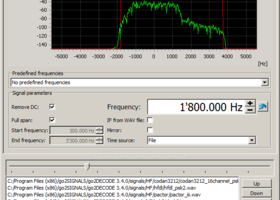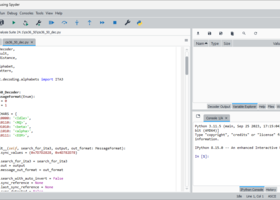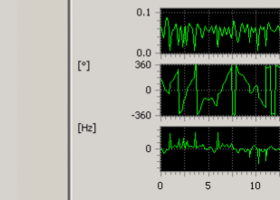go2signals go2DECODE

The increasing density of signals, the growing complexity and the use of modified standard modems are posing a challenge. As every signal is a message, it is necessary to analyze new emissions and to automate the collection of information.
With go2DECODE you can analyze/decode signals, adjust demodulator parameters, develop new decoders and automate your monitoring tasks.
go2DECODE has numerous analysis tools as well as the PYTHON Decoder Development Tool (pyDDL).
Key Facts
- Create and modify decoders with the advanced PYTHON Decoder Description Language (pyDDL)
- Never again wait until a decoder comes on the market!
- Automatic signal processing of radio data and voice signals, decoding, recording
- Wide range of universal demodulators and standard decoders
- Signal decoding from digital or analogous receivers, via streaming, from files or from the internal signal buffer
- COTS hardware (computers, receivers)
- Stay up-to-date with two updates per year
- Windows or LINUX
Your Solution For
Radio Monitoring, Beyond Data Decoding
go2DECODE provides an innovative solution for the automation of radio monitoring. It detects, demodulates and decodes known modems automatically. The system’s knowledge base is implemented as a database, describing well known standard modems.
Signal analysts fill up this signal parameter database with their knowledge about demodulation and decoding parameters. The recognition process obtains the information concerning the signal classes from this database. An adaptation to a changing scenario is possible by entering parameters of new modems. The specialist can concentrate on the analysis of unknown emissions.
With go2DECODE the user can parameterize a set of universal demodulators. The analysis functions can be used not only for input signals, but also for monitoring the internal processing in the demodulator.
The operator can set up a demodulator on a new signal, parameterize the demodulator and optimize the entire process. Later, the bits can be stored and passed to go2ANALYSE (or another tool) for advanced stream analysis or used as input for a new decoder.
The advanced PYTHON Decoder Description Language (pyDDL) can be used to create new decoders or modify existing ones. That's why we deliver go2DECODE including source code for many of our decoders.
For automatic decoding, go2MONITOR is recommended! This is the tool for decoder development!
Manual and Automatic Signal Monitoring
go2DECODE can be used to monitor a single frequency.
The Automatic Production Channel (APC) buffers the incoming signal, allowing lossless detection and decoding without losing the first bit of an emission.
When a signal is detected, the APC searches the modem list for known modem types. Signal parameters such as center frequency and baud rate are determined and displayed. Decoded text is displayed as plain text or as a formatted XML stream. Digital audio can be played back. All the output can be saved to disk.
Manual Analysis of Unknown Signals
Unknown signals can be recorded (automatically or manually). Later these recordings are used for signals analysis, measuring modulation and coding parameters. A wide set of integrated analysis tools supports the analyst. This information and recordings can be later used to modify existing or implement new decoders.
Creation of New Decoders
In contrast to other products, the end customer has the possibility to create his own or to modify existing decoders.
The operator is able to set up a demodulator and parameterize the demodulator for a signal.
With the Python Decoder Description Language (pyDDL) new decoders ca be created. Existing decoders can be modified because the pyDDL source code of many decoders is part of the package. A debugger (Spyder) is also part of the go2DECODE Professional version.
The decoders implemented in go2DECODE can be exported to go2MONITOR by simple drag and drop.
go2DECODE
- Creation of new decoders using PYTHON
- Many existing decoders can be modified
- Manual Analysis of signals with wide set of analysis tools
- Manual and automatic signal monitoring (automatic protocol detection)
- Record signals, analyze and measure modulation and coding parameters




